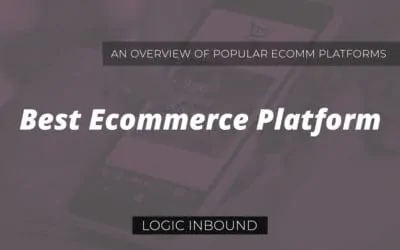Facebook recently implemented changes to circumvent how ad blockers hide advertising on facebook.com. This change is specific to the desktop version of Facebook ads. They’ve joined the ‘cat and mouse’ game of ad blocker vs publisher. Publications like the New York times are well known for going to great lengths to try and make sure everyone sees their ads.
Why is this only coming now, and how is that relevant to the future of Facebook? Keep in mind, Facebook now earns the vast majority of it’s ad revenue from mobile devices.
Barbara Ortutay for the Associated Press covers the full story in her article aggregated to ATT.net
Facebook Hates Ad Blockers So Much It Now Blocks Them
In the most recent quarter , Facebook made $6.24 billion in advertising revenue, an increase of 63 percent from a year earlier. Mobile advertising (which is not affected by the changes) accounted for 84 percent of this.
Read more here…
With that in mind, it’s obvious that looking at the percentages is misleading. To put it into dollars and cents: 80% of $6 billion is $4.8 billion and 20% is $1.2 billion.
Now, increasing that 1.2 billion by even 1 percent means 12 million dollars per year. However, it’s easy to predict that the projected ‘boost’ to yearly revenue is actually much more than 12 million dollars.
AdWeek recently reported on the statistics surrounding desktop ad blocker usage. Lauren Johnson discusses a study by IAB which revealed some key facts.
IAB Study Says 26% of Desktop Users Turn On Ad Blockers Report digs into why people tune out digital promos
According to a new IAB report, 26 percent of desktop users and 15 percent of mobile consumers use blockers to remove ads from publishers’ websites. Roughly 32 percent of ad blockers across both groups are males between 18 and 34, and 22 percent are women of the same age.
IAB adblock statistics
With that in mind, it’s easy to understand why any Facebook executive could conclude that 26% of desktop users are essentially ‘freeloading’ on Facebook.
Take the figure I mentioned earlier, 1.2 billion dollars. That represents about 3 of the 4 pieces of the desktop ad revenue ‘pie’. Now if you had all 4 pieces of the pie, what would their revenue be, all else equal?
400 million dollars is the ‘value’ at stake in Facebook’s “ad block war”.
Adam Levy explains, on The Motley Fool, why this “tiny” fraction is so important to Facebook.
Facebook’s Block on Ad Blockers Is Important for Investors
Not only do desktop ad impressions typically convert better than similar ads on mobile, thus costing more, but Facebook also benefits from the addition of right-hand column ads on desktop. It’s those right-hand column ads that drive down average ad prices on desktop compared with mobile, but they’re incremental to Facebook’s regular news-feed ads. That makes a minute spent on Facebook’s desktop site more valuable than a minute spent on its mobile app.
That’s assuming Facebook’s visitors aren’t using ad blockers.
Put all the pieces together, and now you’ll see what this really means: Facebook is desperately fighting for their most valuable audience.
The past few years have brought Facebook to a great peak thanks to the growth of mobile devices. Millions of new people are signing up for Facebook for the first time ever thanks to their mobile phone.
At the same time, advertising on Facebook is more sophisticated than ever. Digital experts like Gary Vaynerchuck are correctly proclaiming Facebook Ads as the best value in advertising right now.
However, after mobile device adoption plateaus, Facebook won’t be able to ride that growth any further. It’s clear they see it coming because they know their data better than anyone else.
When they’re relying on desperate moves to boost their quarterly earnings for shareholders, that’s a clear sign that the future isn’t bright for Facebook. Instead of innovating and giving people reasons to spend more time on their platform, and bring back their friends to Facebook (thus viewing more ads) they’re relying on the same moves that newspapers have resorted to in order to fund their existence online.
Facebook is following, they’re not leading any more.
Image Credit: Data from IAB, Published on AdWeek




0 Comments
Trackbacks/Pingbacks